Aberdare, Rhondda Cynon Taff, Wales, UK 作者: 来源: 发布时间:2021-09-18
I. Population and Area
Continent: Europe
Country: The U.K
State/Province: Wales
City/Town: Aberdare, Rhondda Cynon Taff
Total Area: 163.7 (sq mi) (Rhondda Cynon Taff)
Population in 2017: 39.55 (thousand)
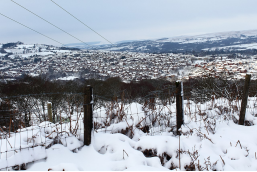
II. Natural Geography (environment and resources)
Transport
The town is served by Aberdare railway station and Aberdare bus station, opposite each other in the town centre. The town has also been subject to an extensive redevelopment scheme during 2012–13.
Local govern
Until the mid-nineteenth century the local government of Aberdare and its locality remained in the hands of traditional structures such as the parish vestry and the High Constable, who was chosen on an annual basis. However, the rapid industrial development of the parsing resulted in the situation where these traditional bodies could not cope with the realities of an urbanised, industrial community which had developed without any planning or facilities. During the early decades of the century the iron masters gradually imposed their influence over local affairs and this remained the case following the formation of the Merthyr Board of Guardians in 1836. During the 1850s and early 1860s, however, as coal displaced iron as the main industry in the valley, the ironmasters were displaced as the dominant group in local government and administration by an alliance between mostly indigenous coal owners, shopkeepers and tradesmen, professional men and dissenting ministers. A central figure in this development was the Rev Thomas Price. The growth of this alliance was rooted in the reaction to the 1847 Education Reports and the subsequent efforts to establish a British School at Aberdare.
In the 1840s there were no adequate sanitary facilities or water supply and life expectancy was low. Outbreaks of cholera and typhus were commonplace. Against this background, Thomas Webster Rammell prepared a report for the General Board of Health on the sanitary condition of the parish, which concluded that a Local Board of Health be established. This happened in 1854. Its first chairman was Richard Fothergill and the members included David Davis, Blaengwawr, David Williams (Alaw Goch), Rees Hopkin Rhys and the Rev. Thomas Price. It was followed by the Aberdare School Board in 1871.
By 1889, the Local Board of Health had initiated a number of developments which included the purchase of local reservoirs from the Aberdare Waterworks Company for £97,000, a sewerage scheme costing £35,000, as well as the opening of Aberdare Public Park and a local fever hospital. The lack of a Free Library, however, remained a concern.
Later, the formation of the Glamorgan County Council (upon which Aberdare had five elected members) in 1889, followed by the Aberdare Urban District Council, which replaced the Local Board in 1889, transformed the local politics of the Aberdare valley.
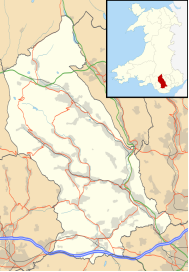
III. ECONOMY
Introduction
This report seeks to provide an up-to-date review and detailed information relating to the progress of the Rhondda Cynon Taf Economic Regeneration Strategy. The economy of Rhondda Cynon Taf has been traditionally associated with mining and manufacturing, playing a leading role in the industrial revolution which changed the course of development for the global economy. The decline in traditional industry throughout the developed world has significantly changed the outlook for the economy of Rhondda Cynon Taf. This report outlines where Rhondda Cynon Taf stands in today’s economic climate, and the future prospects for its economy. With a population of just under 232,000 people, Rhondda Cynon Taf is second only to Cardiff of all Wales’ local authority districts in terms of population size. The area is relatively densely populated and is the seventh most densely populated local authority area in Wales. The main conurbations within Rhondda Cynon Taf follow the lines of the valleys that constitute the locality, namely the Taff Vale, the Cynon Valley and the Rhondda Valleys.
The Knowledge Economy
The proportion of businesses operating in knowledge-based sectors in Rhondda Cynon Taf increased from 10.6% in 2000 to 12.5% in 2004, below the all-Wales average of 14.1% and considerably below the GB average of 20.6%. Much of the growth in knowledge-based businesses in Rhondda Cynon Taf has occurred in the high-technology services sector. Between 2000 and 2004, there was a drop in the proportion of hightechnology manufacturing businesses in Rhondda Cynon Taf, but during the same period the proportion of knowledge-based services businesses rose from 9.5% to 11.6%. The knowledge-based services sector now accounts for around 4,250 jobs within Rhondda Cynon Taf, equivalent to 5.5% of total employment.
Reference Website:
https://www.rctcbc.gov.uk/EN/Resident/PlanningandBuildingControl/LocalDevelopmentPlans/LDPEvidenceBaseLibraryandAnnualMonitoringRe/RelateddocumentsEvidenceBase/EB40.pdf
IV. Industrial Characterisitics
Major industries:
Iron Industry
Ironworks were established at Llwydcoed and Abernant in 1799 and 1800 respectively, followed by others at Gadlys and Aberaman in 1827 and 1847. The iron industry began to expand in a significant way around 1818 when the Crawshay family of Merthyr purchased the Hirwaun ironworks and place them under independent management. In the following year, Rowland Fothergill took over the ironworks at Abernant and a few years later did the same at Llwydcoed. Both concerns later fell into the hands of his nephew Richard Fothergill. The Gadlys Ironworks was established in 1827 by Matthew Wayne, who had previously managed the Cyfarthfa ironworks at Merthyr. The Gadlys works, now considered an important archaeological site, originally comprised four blast furnaces, inner forges, rowing mills and puddling furnaces. The development of these works provided impetus to the growth of Aberdare as a nucleated town. The iron industry was gradually superseded by coal and all the five iron works had closed by 1875, as the local supply of iron ore was inadequate to meet the ever-increasing demand created by the invention of steel, and as a result the importing of ore proved more profitable.
Coal industry
The iron industry had a relatively small impact upon the economy of Aberdare and in 1831 only 1.2% of the population was employed in manufacturing, as opposed to 19.8% in neighbouring Merthyr Tydfil. In the early years of Aberdare's development, most of the coal worked in the parish was coking coal, and was consumed locally, chiefly in the ironworks. Although the Gadlys works was small in comparison with the other ironworks it became significant as the Waynes also became involved in the production of sale coal. In 1836, this activity led to the exploitation of the "Four-foot Seam" of high-calorific value steam coal began, and pits were sunk in rapid succession.
In 1840, Thomas Powell sank a pit at Cwmbach, and during the next few years he opened another four pits. In the next few years, other local entrepreneurs now became involved in the expansion of the coal trade, including David Williams at Ynysgynon and David Davis at Blaengwawr, as well as the latter's son David Davis, Maesyffynnon. They were joined by newcomers such as Crawshay Bailey at Aberaman and, in due course, George Elliot in the lower part of the valley. This coal was valuable for steam railways and steam ships, and an export trade began, via the Taff Vale Railway and the port of Cardiff. The population of the parish rose from 6,471 in 1841 to 14,999 in 1851 and 32,299 in 1861 and John Davies described it as "the most dynamic place in Wales". In 1851, the Admiralty decided to use Welsh steam coal in ships of the Royal Navy, and this decision boosted the reputation of Aberdare's product and launched a huge international export market. Coal mined in Aberdare parish rose from 177,000 long tons (180,000 t) in 1844 to 477,000 long tons (485,000 t) in 1850, and the coal trade, which after 1875 was the chief support of the town, soon reached huge dimensions.
The growth of the coal trade inevitably led to a number of industrial disputes, some of which were local and others which affected the wider coalfield. Trade unionism began to appear in the Aberdare Valley at intervals from the 1830s onwards but the first significant manifestation occurred during the Aberdare Strike of 1857–8. The dispute was initiated by the depression in trade which followed the Crimean War and saw the local coal owners successfully impose a reduction in wages. The dispute did, however, witness an early manifestation of mass trade unionism amongst the miners of the valley and although unsuccessful the dispute saw the emergence of a stronger sense of solidarity amongst the miners.
Major projects and related introductions:
New £22m Coleg y Cymoedd campus
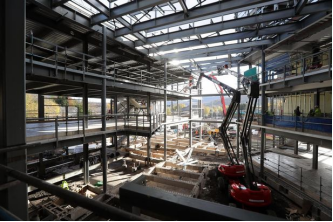
The new £22m college campus in Robertstown is on course to be finished and open to students in September 2017. The project has hit various landmarks in 2016, such as the start of construction in March when the turf was broken by First Minister Carwyn Jones, and a 'topping out' ceremony in November, to signify the point when the entire structure of the campus was built.
It was also recently revealed that a student-run salon and a restaurant will open to members of the public on site , as learners gain experience in an industry-like environment.
Reference Website:
https://www.walesonline.co.uk/news/local-news/eight-major-projects-could-change-12282623
V. Attractions
1. Coliseum Theatre:
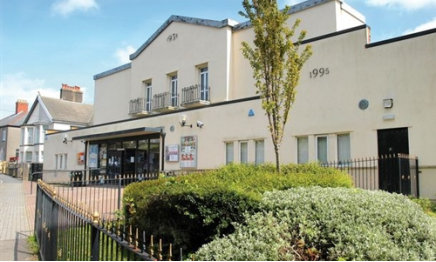
The Coliseum Theatre is celebrating 80 years - 2018. Nestled in a residential street in Aberdare, this striking building has a varied programme that includes comedy, music, drama, light entertainment and family events. Digital 3D cinema also forms an essential part of the programme.
2018 is set to be a landmark year for our iconic and beautiful building - with unique performances taking place, developed solely as a celebration of the venue and its significance in the history of the community and the arts in Wales.
2. Combat Zone:
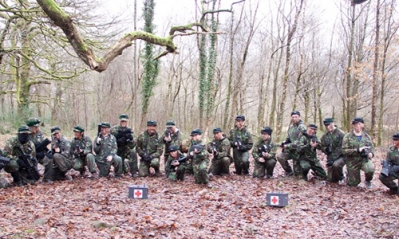
Combat Zone Live is about fun and value and it's the most realistic combat simulation you can find, short of joining the military. Former soldiers compare the experience to the training they received for fighting in built up areas (FIBUA Training).
Playing at Combat Zone Live is like being inside your game console or part of your own movie. When you arrive you will be fully briefed on the battlefield, on how to use the gaming guns and on your team's objectives. It's an experience that you won't forget. Ideal for birthday parties, stag and hen parties, team building events or just dropping in for a game.
Our weapons have no projectiles, they use an infrared beam of light (as used by the military). The light beam activates sensors on the opposition.
3. Cynon Valley Museum:
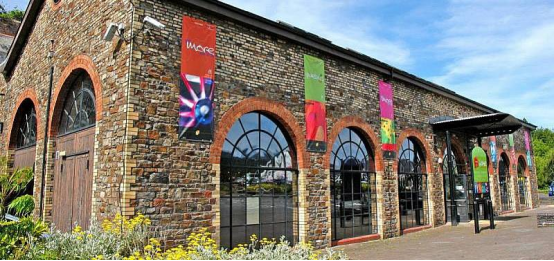
Come along to the Cynon Valley Museum to discover the incredible history of the people who worked and lived here. We also display beautiful wall-mounted and 3-D art in our two temporary exhibition spaces, all produced by locally based artists. The Shop sells unique and handmade homeware, art and gifts, all at affordable prices. Perfect for a special gift or treating yourself. Marty's at the Museum, the on site cafe, provides barista coffee, homemade cakes and delicious lunches.
We run events which include children's activities, talks, quizzes and more, so always keep an eye on our facebook page for more information. Free admission, free onsite parking, gallery and shop, toilets, disabled access.
Reference Website:
https://www.rctcbc.gov.uk/EN/Events/AberdareFestival/LocalAttractions/LocalAttractions.aspx
VI. History
The settlement of Aberdare dates from at least the Middle Ages, with the first known reference being in a monastic chapter of 1203 concerning grazing right on Hirwaun Common. It was originally a small village in an agricultural district, centred around the Church of St John the Baptist, said to date from 1189. By the middle of the 15th century, Aberdare contained a water mill in addition to a number of thatched cottages, of which no evidence remains. In the early 19th century the population of Aberdare grew rapidly, owing to the abundance of coal and iron ore. The population of the whole parish, 1,486 in 1801, increased tenfold during the first half of the 19th century.
Two major industries supported the growth of the community: first iron, then coal. A branch of the Glamorganshire Canal (1811) was used to transport these products; then the railway became the main means of transport to the South Wales coast. From the 1870s onwards, the economy of the town was dominated by the coal mining industry, with only a small tinplate works. There were also several brickworks and breweries. During the latter half of the 19th century, considerable improvements were made to the town, which became a pleasant place to live, despite the nearby collieries. A postgraduate theological college opened in connection with the Church of England in 1892, but in 1907 it moved to Llandaff.
With the ecclesiastical parishes of St Fagan's (Trecynon) and Aberaman carved out of the ancient parish, Aberdare had 12 Anglican churches and one Catholic church, built in 1866 in Monk Street near the site of a cell attached to Penrhys monastery; and at one time there were over 50 Nonconformist chapels (including those in surrounding settlements such as Cwmaman and Llwydcoed). The services in the majority of the chapels were in Welsh. Most of these chapels have now closed, with many converted to other uses. The urban district includes what were once the separate villages of Aberaman, Abernant, Cwmaman, Cwmbach, Cwmdare, Llwydcoed, Penywaun and Trecynon. There are several cairns and the remains of a circular British encampment on the mountain between Aberdare and Merthyr. Hirwaun moor, 4 miles to the north west of Aberdare, was according to tradition the scene of a battle at which Rhys ap Tewdwr, prince of Dyfed, was defeated by the allied forces of the Norman Robert Fitzhamon and Iestyn ap Gwrgant, the last Welsh prince of Glamorgan.
VII. Culture
Aberdare, during its boom years, was considered a centre of Welsh culture: it hosted the first National Eisteddfod in 1861, with which David Williams (Alaw Goch) was closely associated. A number of local eisteddfodau had long been held in the locality, associated with figures such as William Williams (Carw Coch) The Eisteddfod was again held in Aberdare in 1885, and also in 1956 at Aberdare Park where the Gorsedd standing stones still exist. At the last National Eisteddfod held in Aberdare in 1956 Mathonwy Hughes won the chair. From the mid nineteenth century, Aberdare was an important publishing centre where a large number of books and journals were produced, the majority of which were in the Welsh language. A newspaper entitled Y Gwladgarwr (the Patriot) was published at Aberdare from 1856 until 1882 and was circulated widely throughout the South Wales valleys. From 1875 a more successful newspaper, Tarian y Gweithiwr (the Workman's Shield) was published at Aberdare by John Mills. Y Darian, as it was known, strongly supported the trade union movements among the miners and ironworkers of the valleys. The miners' leader, William Abraham, derived support from the newspaper, which was also aligned with radical nonconformist liberalism. The rise of the political labour movement and the subsequent decline of the Welsh language in the valleys, ultimately led to its decline and closure in 1934.
The Coliseum Theatre is Aberdare's main arts venue, containing a 600-seat auditorium and cinema. It is situated in nearby Trecynon and was built in 1938 using miners' subscriptions. The Second World War poet Alun Lewis, was born near Aberdare in the village Cwmaman and there is a plaque commemorating him, including a quotation from his poem The Mountain over Aberdare.
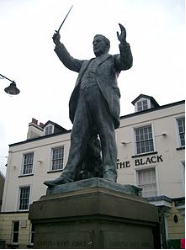
The founding members of the rock band Stereophonics originated from the nearby village of Cwmaman. It is also the hometown of guitarist Mark Parry of Vancouver rock band The Manvils. Famed anarchist-punk band Crass played their last live show for striking miners in Aberdare during the UK miners' strike. He is depicted in the town's most prominent statue by sculptor Goscombe John, unveiled on Victoria Square in 1920. Aberdare was culturally twinned with the German town of Ravensburg.
VIII. Other information
Anglican Church
The original parish church of St John the Baptist was originally built in 1189. Some of its original architecture is still intact. With the development of Aberdare as an industrial centre in the nineteenth century it became increasingly apparent that the ancient church was far too small to service the perceived spiritual needs of an urban community, particularly in view of the rapid growth of nonconformity from the 1830s onwards. Eventually, John Griffith, the rector of Aberdare undertook to raise funds to build a new church, leading to the rapid construction of St Elvan's Church in the town centre between 1851 and 1852. This Church in Wales church still stands the heart of the parish of Aberdare and has had extensive work since its erection. The church has a modern electrical, two-manual and pedal board pipe organ, that is still used in services.
Nonconformity
The Aberdare Valley was a stronghold of Nonconformity from the mid-nineteenth century until the inter-war years. In the aftermath of the 1847 Education Reports nonconformists became increasingly active in the political and educational life of Wales and in few places was this as prevalent as at Aberdare. The leading figure was Thomas Price, minister of Calfaria, Aberdare.
Aberdare was a major centre of the 1904–05 Religious Revival, which had begun at Loughor near Swansea. The revival aroused alarm among ministers for the revolutionary, even anarchistic, impact it had upon chapel congregations and denominational organisation. In particular, it was seen as drawing attention away from pulpit preaching and the role of the minister. The local newspaper, the Aberdare Leader, regarded the revival with suspicion from the outset, objecting to the 'abnormal heat' which it engendered. Trecynon was particularly affected by the revival, and the meetings held there were sais to have aroused more emotion and excitement than the more restrained meetings in Aberdare itself. The impact of the revival was significant in the short term, but in the longer term was fairly transient.
Once the immediate impact of the revival had faded, it was clear from the early twentieth century that there was a gradual decline in the influence of the chapels. This can be explained by several factors, including the rise of socialism and the process of linguistic change which saw the younger generation increasingly turn to the English language. There were also theological controversies such as that over the New Theology propounded by R.J. Campbell.
Of the many chapels, few are still used for their original purpose and a number of closed since the turn of the millennium. Many have been converted for housing or other purposes (including one at Robertstown which has become a mosque), and others demolished. Among the notable chapels were Calfaria, Aberdare and Seion, Cwmaman (Baptist); Saron, Aberaman and Siloa, Aberdare (Independent); and Bethania, Aberdare (Calvinistic Methodist).
Independents
The earliest Welsh Independent, or Congregationalist chapel in the Aberdare area was Ebenezer, trecynon, although meetings had been held from the latter years of the eighteenth century in dwelling houses in the locality, for example at Hirwaun. During the nineteenth century, the Independents showed the biggest increases in terms of places of worship: from two in 1837 to twenty-five (four of them being English causes), in 1897. By 1910 there were 35 Independent chapels, with a total membership of 8,612. Siloa Chapel was the largest of the Independent chapels in Aberdare and is one of the few that remain open today, having been 're-established' as a Welsh language chapel. The Independent ministers of nineteenth-century Aberdare included some powerful personalities but none had the kind of wider social authority which Thomas Price enjoyed amongst the Baptists.
Baptists
The Baptists were the most influential of the nonconformist denominations in Aberdare and their development was led by the Rev. Thomas Price who came to Aberdare in the early 1840s as minister of Calfaria Chapel. In 1837 the Baptists had three chapels, but in 1897 there were twenty, seventeen of them being Welsh. By 1910 the number of chapels had increased to 30, with a total membership of 7,422. Most of these Baptist chapels were established under the influence of Thomas Price who encouraged members to establish branch chapels to attract migrants who flocked to the town and locality from rural Wales. The chapels came together for regular gatherings, including baptismal services which were held in the River Cynon As a result, Price exerted an influence in the religious life of the locality which was far greater than that of any other minister.
IX. Contact information
Mayor/Officer: Susan Morgans
Tel: 01443 424048
Mail: mayor@rctcbc.gov.uk
Reference Website:
https://www.rctcbc.gov.uk/EN/Council/TheMayor/TheMayor.aspx
